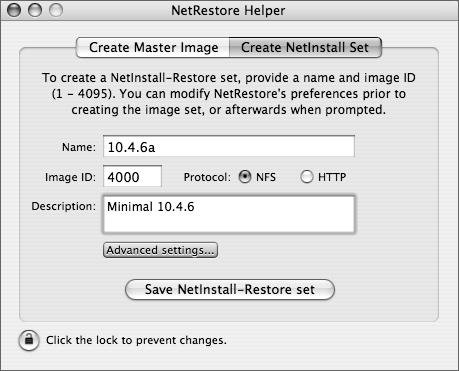Create Netinstall Image From Dmg
Create a NetBoot image. To create your NetBoot image: Locate the disk image you created last week using AutoDMG and double click it. Make sure you let it verify. Open the System Image Utility. Click the Source menu, and select your disk image’s Macintosh HD volume. Choose NeBoot Image. AutoDMG is a phenomenal app that creates bootable disk images you can use to restore a single image to a single hard drive using Apple’s Disk Utility or create network images with the System Image Utility for NetBoot and NetInstall images, which is exactly what we’re going to do. Create a NetBoot image. Locate the disk image you created last week using AutoDMG and double click it. Make sure you let it verify. Open the System Image Utility. Click the Source menu, and select your disk image’s Macintosh HD volume. Choose NeBoot Image. Click Next and agree to the. Oct 13, 2009 Then, in the Create Image item at the bottom of your workflow, make sure the NetInstall option is selected in the Type section. Click the Save To drop down and select Other. Select your boot drive from the Devices list in the sidebar and click Open. (You can save directly to a network volume if you want to save yourself a step later, but I like to save mine locally so a network hiccup won’t interrupt the image build process.).
But too bad that the function to “convert dmg to iso” is restricted and won’t be functional until you buy the software. Convert yosemite dmg to iso free. How To Convert DMG Files To ISO Files On LinuxFree open-source app provides a great deal of disc image manipulation tools not found in the Gnome desktop. It is particularly useful for mounting proprietary formats found in Windows and Mac boot discs. It can mount/unmount a variety of image formats (ISO, DMG, MDF, NRG, BIN, NRG), convert images, create, encrypt, and decrypt ISOs, play DVDs (with the required codecs installed), and much more.
Create Netinstall Image From Dmg Windows 10
System Image Utility User Guide
A NetInstall network image allows you to install macOS on Mac computers. Workflows that create custom NetInstall network images require a macOS install app. After macOS installs, a Mac can start up from its own internal storage device. This network image boots into the installer environment and performs the workflow actions you define.
Create a NetInstall image
Configuring NetInstall for deployment. Now that the NetInstall file has been created, it's time to enable it for use with deployment (by default, all NetInstall and NetBoot images are disabled until manually enabled by the admin). Go back to the Server.app console and click on the Images tab in NetInstall. Sep 13, 2018 I'm trying to create a bootable drive from the El Capitan disk image I was able to download, I've found many articles on how to do so but the instructions are not compatible with what I have on my computer. Many sites say I have to go into Applications and find the installer, which is not there. How do I get the installer into Applications? DMG file is a compressed file format being used widely on Mac computer. Windows OS doesn't natively support DMG disk image files, so if you need to create a bootable USB drive from a DMG file, mostly for bootable Mac OS X or macOS installation USB, you need a special utility to help you complete the task.
In the System Image Utility app on your Mac, click the Source pop-up menu, choose the macOS install app, then click Next.
You need a valid macOS install app to create a NetInstall image.
Select NetInstall Image, then click Next.
Read the macOS License Agreement. If you agree, click Agree to continue.
(Optional) Click the Add button to add configuration profiles, packages, or scripts to your NetInstall image, then click Next.
Click the Remove button to remove any items.
(Optional) Specify system configuration options, then click Next.
To learn more about computer naming and ByHost preferences, see System Configuration settings.
(Optional) Click the Add button to bind the recipients of this image to a directory server, then click Next.
To learn more about binding to a directory server using System Image Utility, see Bind to a directory service.
Premiere pro 2017 11.1.2 dmg. Dynamic Link with Character Animator Eliminate intermediate rendering and speed up performance when working between Character Animator, After Effects, and Premiere Pro. Publish directly to Behance Publish videos directly to your Behance portfolio — no need for separate export or uploading.
(Optional) Choose to automatically install on a specific volume and whether to erase the volume, and set the system language.
To learn more about automating installations, see Configure automation settings.
Enter a network disk name and description, select how the image number is to be assigned, then click Next.
To learn more about defining image settings, see Define image settings.
(Optional) Select the computer models that can start up using this image, then click Next.
To learn more about restricting computer models, see Manage supported computer models.
(Optional) Click the Add button or click Import to add MAC addresses to an allow or deny list, then click Next.
In the Save As dialog, choose where to save the image (you can move it later), then click Save.
If NetInstall service is configured on an Ethernet network port and the Server app is set to serve images from a volume, the NetInstall service share point folder NetBootSPn appears in the pop-up menu.
Important: Do not attempt to edit content in the image destination folder while the image is being created.

